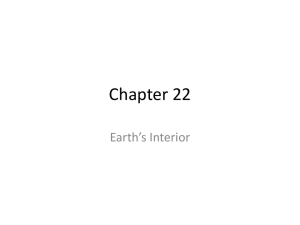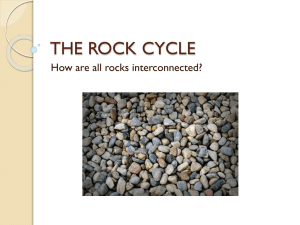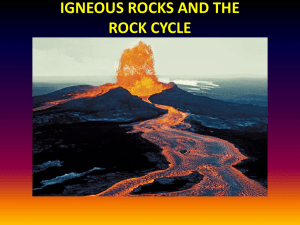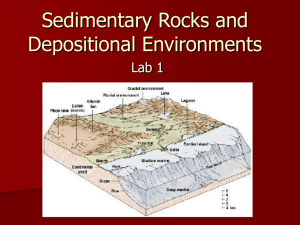19.5 Rocks and Minerals
advertisement
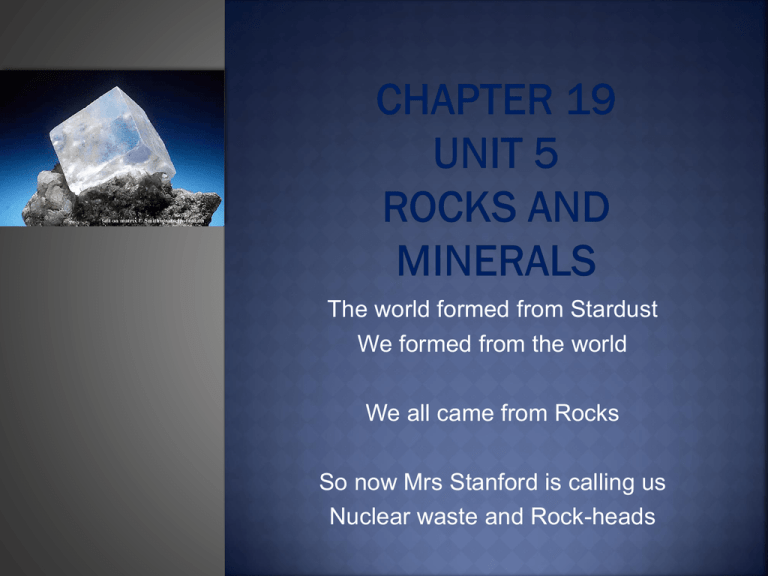
The world formed from Stardust We formed from the world We all came from Rocks So now Mrs Stanford is calling us Nuclear waste and Rock-heads Describe the three major types of rocks and how they form Discuss physical and chemical properties of each major type of rock Describe the rock cycle Explain how to find relative rock ages and absolute rock ages Diamond, the hardest mineral on earth, is composed of Carbon. The same material needed for life as we know it. Most of the earth’s crust is made of some form of quartz Diamonds, Rubies, Quartz, Garnets, and most of the precious gems we are familiar with come in many colors Magnesium burns white and very hot (don’t believe me, burn an old VW Bug engine in a bonfire) Copper burns green (copper is also toxic, many gem cutters don’t work with Malachite, which is a semi-precious gemstone containing copper) A natural, inorganic solid with a definite chemical composition and a characteristic internal structure Ex. Quartz, is silicon dioxide, SiO2 Think of Triangular Pyramids being put together a specific way, over and over and over Granite is a rock composed of different minerals Coal is decomposed plant matter Feldspar Olivine Clay Pyroxene Dolomite Calcite Mica Amphibole Quartz Appearance and Characteristics reflect mineral composition (what is it) and the way it was formed are three major types of rocks – Igneous Sedimentary Metamorphic There Remember the difference between Magma and Lava Magma is underground Lava is on the surface Granite forms from magma Granite cools underground, Granite is course You can see different grains Obsidian forms from lava Cools quickly on the surface Obsidian is smooth like glass Obsidian you can’t see grains Granite is an Intrusive Igneous Rock Rocks are not permanent structures, they break down by a process called Weathering Weathering changes the physical form or chemical composition of rock minerals exposed at earth’s surface Weathering can be from wind, rain, acids… Making new rock from old weathered rock Rock formed from compressed or cemented deposits of Sediment Sediment is weathered rock, carried away by wind or water and deposited in an new location Sediments can be deposited by rivers, wind (sand dunes), glaciers, oceans… Sedimentary rock often includes the bodies or remains of animals and plants Dinosaur National Monument, in North-West corner of Colorado is a large sedimentary rock formation that has been exposed by humans to uncover the remains of many dinosaurs Pressure – rocks and water above can squeeze sediments into sedimentary rock “Glue” – rocks dissolve and enter pores and resolidify gluing the sediments together Conglomerate – made of pebbles and large visible rocks cemented together with a brown material of mostly quartz Sandstone Mudstone, if flaky called Shale Limestone – made of fossils of organisms that lived in water Forms Caves Limestone dissolves in water and leaves a cavity in the ground Some minerals that are already in the water deposit in the cave leaving formations Some amazing formations found in caves Rocks that started as Igneous or Sedimentary can be changed by “squeezing”, “heating” or sometimes a chemical process Usually both heat and pressure are involved in metamorphosing a rock Heat and pressure turn limestone into marble Marble will often have bands of color and swirls Shale (remember that’s flaky mudstone) turns into slate when heated and compressed Shale and slate are often rock types where oil and natural gas can be found Geologists searching for gas and crude oil look for evidence of these rocks http://www.classzone.com/books/earth_scienc e/terc/content/investigations/es0602/es0602p age02.cfm Can be hard to tell We can find relative age using “Law of Superposition” Older rocks are on the bottom, Examples Grand Canyon, Layers of rocks seen in Grand Junction Area… Fossils in rocks lower in a rock face are older than fossils in rocks above them Radioactive elements will “decay” - they break down to other elements or forms Carbon, Argon, Rubidium, Strontium, Uranium and Lead are all used for Radioactive Dating Determines absolute age of rock Rocks in Minnesota are 3.2 billion years old Rocks in Greenland are 4.2 billion years old







